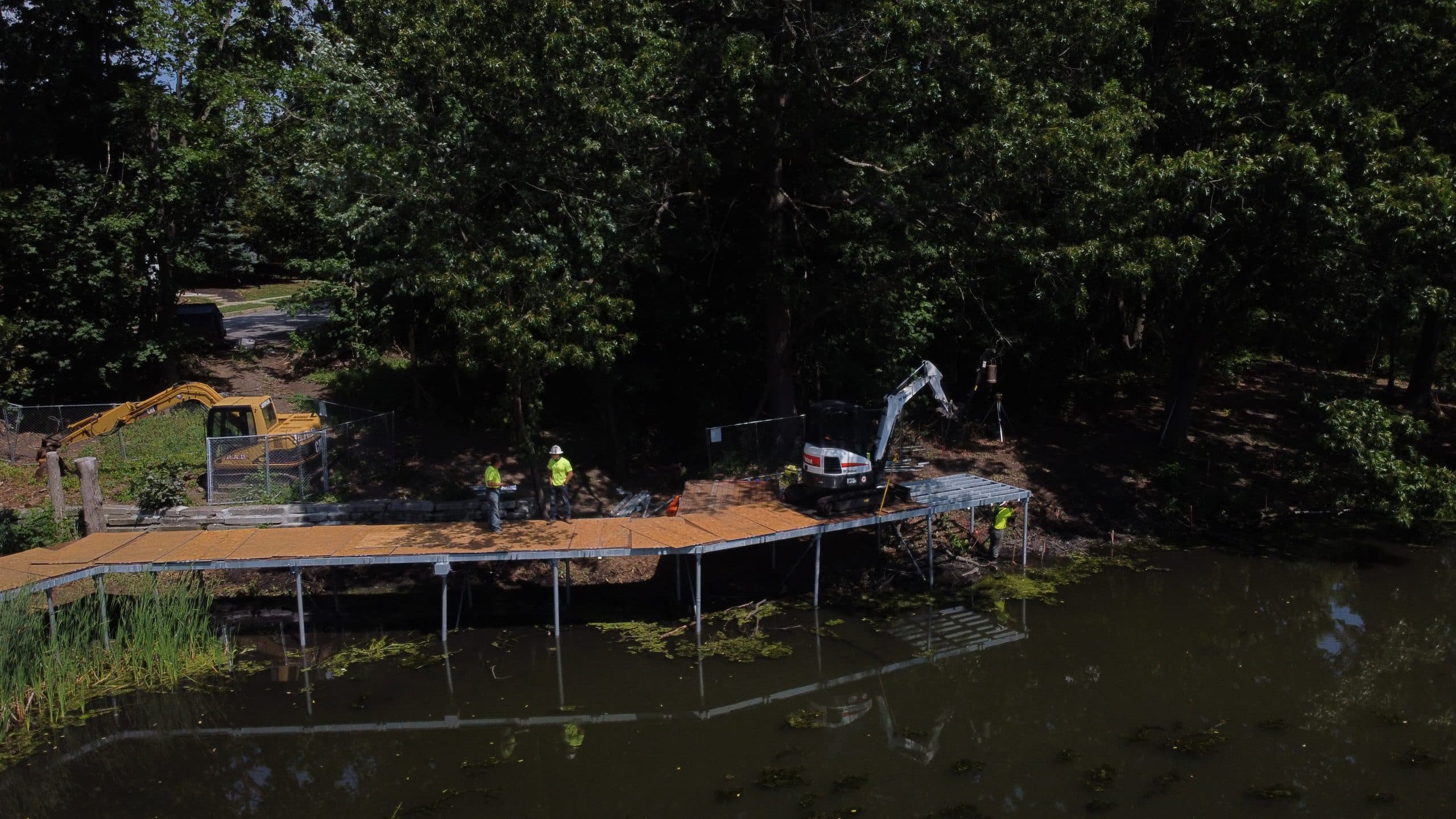Reflecting on this past year, we wish to thank everyone who worked with us on so many interesting and challenging geotechnical projects! Below you will find a recap of our HELICAL News Briefs from 2022.
1) Working Platforms
A Working Platform is the subgrade from which site construction activities are completed. Proper design and construction of Working Platforms are essential for safe, productive site working conditions. See our January News Brief for more detail.
2) Secant Pile Earth Support Walls
Our February News Brief focused on Secant Pile Walls. Secant Pile Walls can be installed in a wide range of soil conditions, and they can be dual-purposed for temporary excavation support and as the permanent basement wall system. For more information on Secant Pile Walls, please see our February News Brief.
3) Geotechnical Design-Build Applications for Renovating and Repositioning Existing Buildings
As our world continues to adapt to new ways of living and working, the renovation or “repositioning” of existing buildings will remain a thriving sector. Why is geotechnical design/build sometimes required for these projects? Read our March News Brief to find out.
4) Supporting Structures on Mixed Foundation Systems
For most projects, having one foundation system is a foregone conclusion since subsurface soil conditions below a given footprint generally have some level of consistency and require the same foundation type. However, some sites have relatively drastic changes in subsurface soil conditions across a proposed building footprint and require a mixed foundation system. See our April News Brief for more.
5) Earth Retention and Soil Nailing
Soil Nailing is an engineered earth retention method that uses grouted tensile elements (“soil nails”) combined with wire-mesh-reinforced shotcrete to create a stable reinforced soil mass. For more information on Soil Nailing, please see our May News Brief.
6) Future Mass State Building Code (10th Edition) to include Ground Improvement
Did you know that the forthcoming MA State Building Code (10th Edition) will likely include specific requirements for Ground Improvement, including Rigid Inclusions? Read our July/August News Brief to see some key requirements that will likely be addressed in the code.
7) Getting Dirty – Brief Videos of HELICAL Crews in Action!
HELICAL in action! Our September News Brief includes videos that will give you a glimpse into how we build.
8) Proper Modulus/Load Testing Procedures for Geopier® Rammed Aggregate Pier® Systems
Our October News Brief is a “back-to-basics” topic on ground improvement and examines the fundamentals of proper Geopier Rammed Aggregate Pier® field modulus testing. For Aggregate Piers, field modulus testing should be run to a maximum load of 150% of the design top-of-pier stress (not design footing bearing pressure) to demonstrate a safe response during service loading. See our October News Brief, which includes a project example, for more detail on why this is so important.
9) Low-Vibration Ductile Iron Piles
Ductile Iron Piles are a simple, fast low-vibration driven pile system. DIPs derive their capacity through either end-bearing in dense soil or bedrock, or by developing frictional capacity along a grouted bond zone within competent soils. Read our November News Brief for more information on Ductile Iron Piles.











